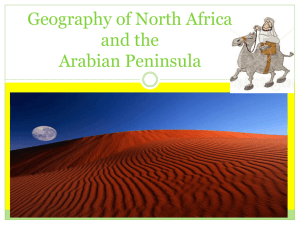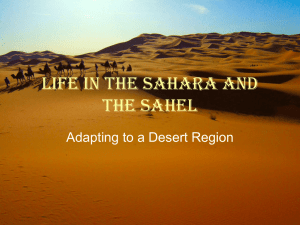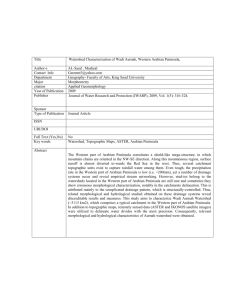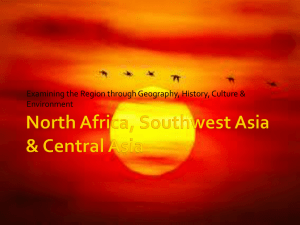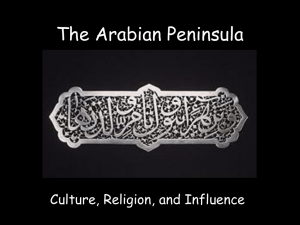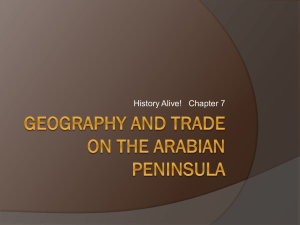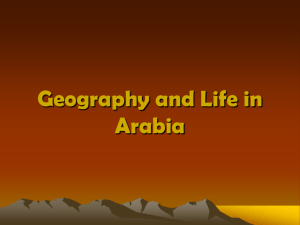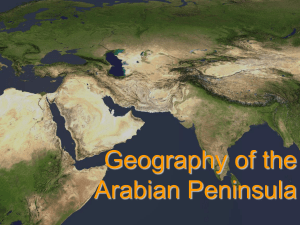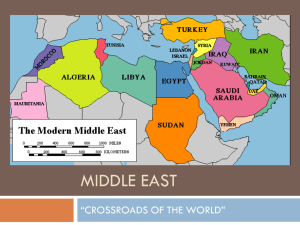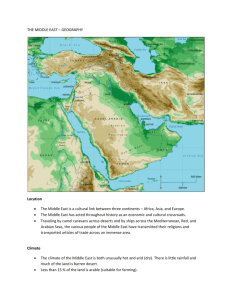The Geography of the Arabian Peninsula
advertisement
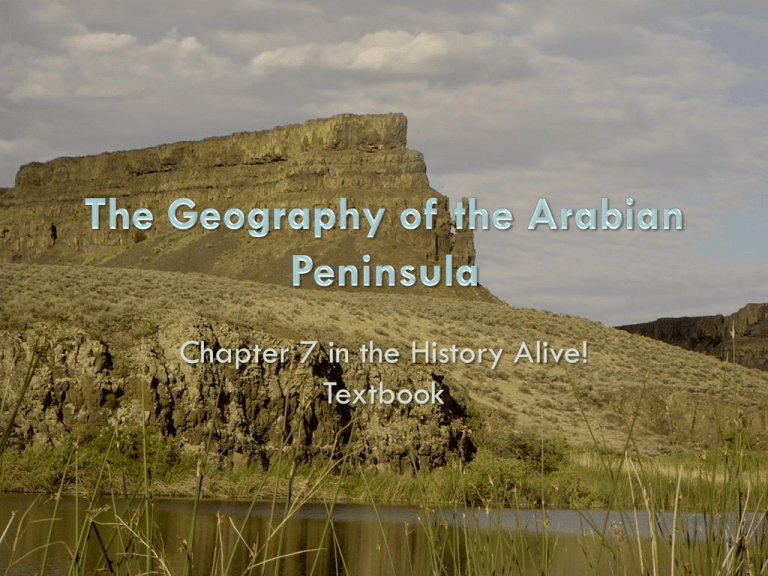
Chapter 7 in the History Alive! Textbook • Muhammad, the founder of Islam was born on the peninsula in about 570 C.E. • Arabian peninsula is in the southwest Asia, between the Red Sea and the Persian Gulf* • Most of the people living in Arabia in the 6th century were Arabs** • From the air, you see vast deserts dotted by oases. Coastal plains line the southern and western coasts. Mountain ranges divide these coastal plains from the deserts. • The hot, dry Arabian Peninsula is a challenging place to live. • Arabia lies at the crossroads of Asia, Africa, and Europe* • A great deal of trade passed through this region** • As early as 2000 BCE, the people of Arabia served as middlemen in the trade between these lands*** • Knowledge, ideas, technology, and goods flowed through Arab lands**** • About ¾ of the Arabian Peninsula is covered by desert which includes vast seas of sand, plains, and plateaus (a raised area of flat land) • Environment* • Adaptations – Shelter** – Transportation*** – Clothing/Nutrition**** • Some Bedouins controlled the valuable trade routes that linked towns and villages. Merchants operated caravans that carried goods across the desert***** • The desert is dotted with oases, areas where fresh water is available • Oases are important because they provide plant life and shade as well as water • Environment* • Adaptations** • A number of towns developed around oases, linked by tracks through the desert*** • It runs along the coasts of the peninsula and separates inland plateaus from the Red Sea, the Arabian Sea, and the Persian Gulf. • Environment* • Adaptations** • Arabia’s largest mountain ranges run along the western and southern edges of the peninsula. They divide the coastal plain from the desert. • Environment* • Adaptations**

